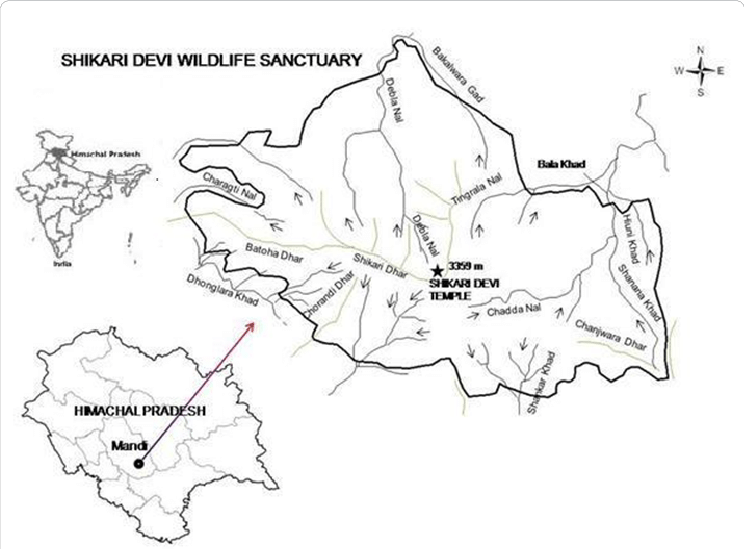PRELIMS BITS
The Indian government has recently established eco-sensitive zones (ESZs) around the Shikari Devi Wildlife Sanctuary in Mandi district to safeguard the sanctuary from the negative effects of urbanisation and development.

Sanctuary Overview:
- Location: Situated in the Himalayas, covering 29.94 square kilometres.
- Elevation Range: From 1,800 to 3,400 metres.
- Significance: Established in 1962 to protect wildlife, the sanctuary is named after the goddess Shikari Devi, with a temple dedicated to her.
Eco-Sensitive Zones (ESZs):
- Coverage: Includes 43 villages from Nachan and Karsog Forest Divisions.
- Goal: Restrict harmful activities while promoting sustainable practices like organic farming.
Regulations and Restrictions:
- Prohibited activities include commercial mining, major hydropower projects, and deforestation.
- Encouraged practices include sustainability efforts under a Zonal Master Plan to guide development.
Management Strategy:
- Core and Buffer Model: Balances wildlife protection with local community needs.
- A committee, led by the Chief Conservator of Forests, oversees the ESZ’s implementation.
Human-Wildlife Conflict:
- The initiative aims to mitigate conflicts and threats such as grazing, poaching, and illegal resource collection.
Flora and Fauna:
- The sanctuary is home to diverse forest types, including alpine pastures and coniferous forests.
- Notable species include the Snow Leopard, though confirmed sightings are awaited.
Community Impact:
- Local communities are impacted by activity restrictions but stand to benefit from the sanctuary’s protection, which is crucial for both wildlife conservation and their livelihoods.




